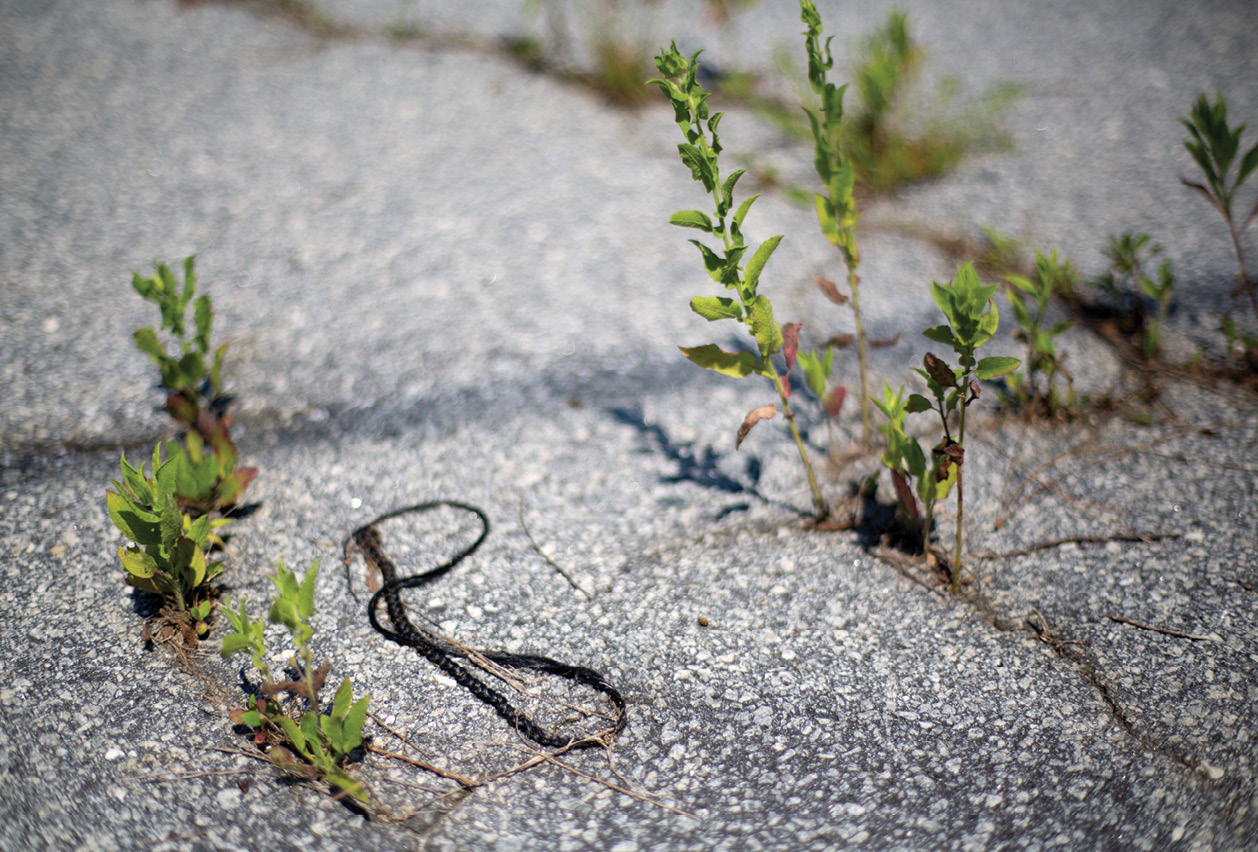There’s a sense of irony in going to an arts space in a currently-gentrifying area of Philadelphia to watch a video populated largely by shots of neglected city streets. As Francis Fukuyama’s narration discusses globalization, economics, and citizenship, David Hartt’s drone cameras linger on crumbling and abandoned industrial buildings, vacant lots overgrown with weeds, endless lengths of highway flanked by trees. After all, if I wanted to see the effects of rising inequality in former manufacturing strongholds in a more direct way, I could just stick my head out of the building and take a look around at the rapid construction of styleless loft apartments, the proliferation of beer gardens, hipster coffee shops, and, yes, art venues that mean the rent’s about to go up.
It’s all happening just outside the windows of the Philadelphia Photo Arts Center, where David Hartt’s “Negative Space/the Last Poet,” an installation of defunct pay phone frames, photography, and the video, filmed with aerial drone cameras, is on exhibit. Retracing the journey Robert Rauschenberg photographed in 1980, Hartt has created a sequel to Rauschenberg’s documentation of the idiosyncratic, highly-regionalized landscapes of the eastern seaboard of the United States. Unlike what Rauschenberg saw, however, Hartt has captured an endless landscape—note the singular—where late-stage capitalism has rendered everything a monotonous relic, where Fukuyama’s own conception of the “end of history”—the triumph of liberal democracy and capitalism as the best way of life—is rendered inadequate before our eyes.
In striking meta-moments that consciously call attention to the social uses and connotations of drones, Hartt focuses in on small details, for example, a single cluster of leaves, or a piece of litter. These seconds of footage are the most striking of the entire twenty-plus minutes of video because they present a deliberate tension. These machines of war—now hobby toys—still maintain their cold air of surveillance in “the Last Poet” when used for long aerial shots, yet these snippets of close-up footage emulate a kind of humanity not associated with drones: the personal nature of the hand-held camera.
Hartt’s camera floats above and around chain businesses, strip malls and interstates punctuated with the same green signs, and it’s impossible to tell where we’re looking. Just as Fukuyama muses about the United States’ forgetting of societal history in the face of rising right-wing populism, the material history and evidence of the past is literally erased from the landscape, turning Rauschenberg’s quirky local highlights into a mausoleum of sameness.
The shells of pay phones included in the show proper also hone in on the relic aspect, albeit in a much more straightforward way. As Fukuyama discusses the disintegration of the welfare state, and how the white working class has felt left behind by increasing globalization, Hartt’s inclusion of a defunct pay phone provides a literal illustration of concern for the public good as a relic. If we look at the public pay phone as evidence of a social contract—as a service provided to all citizens, like public transit—its disappearance and fading into obscurity across the United States almost causes alarm, reinforcing the rather ambivalent tone of “the Last Poet.” 



